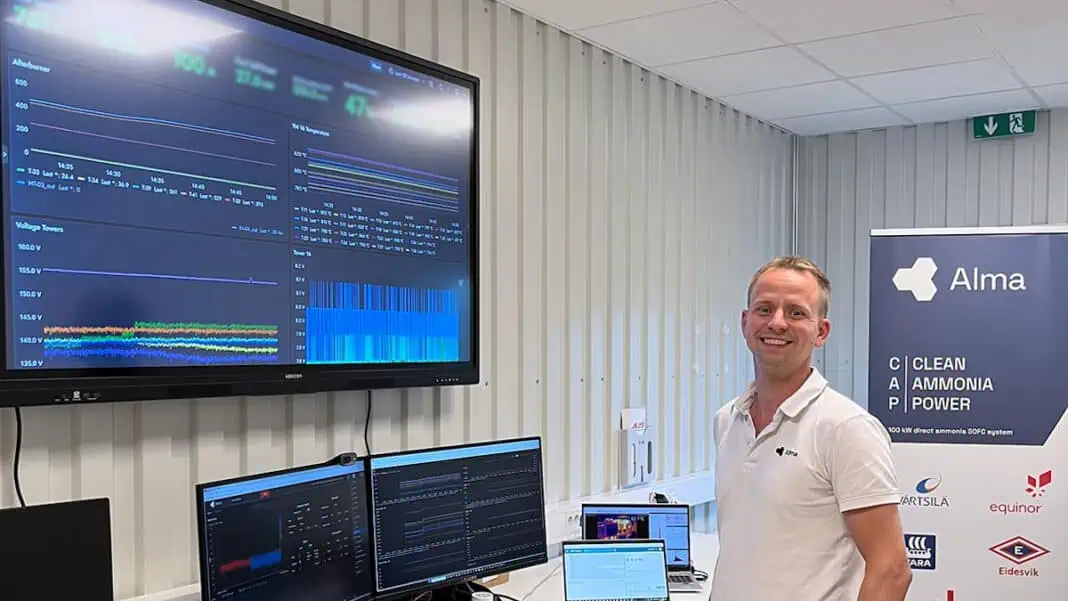Alma Clean Power, a provider of clean power systems for ocean industries, is proud to announce the successful initial testing of its ground-breaking fuel cell system powered directly by ammonia.
One year ago, Alma Clean Power announced the successful testing of the world’s first 6 kW direct ammonia fuel cell system. The system has been significantly scaled up, and now also includes all auxiliary systems necessary for maritime applications, such as safety systems and advanced control.
Bernt Skeie CEO, “This milestone marks a significant step forward in our commitment to developing clean, sustainable energy solutions for the maritime industry,” said Bernt Skeie, CEO at Alma Clean Power. “Our team has worked tirelessly to bring this innovative system to life, and we are proud to be at the forefront of ammonia-based energy solutions.”
The first-of-its-kind Solid Oxide Fuel Cell (SOFC) system converts ammonia directly to electricity without upstream cracking. The testing is being conducted at the Energy House at Stord where the system is fully integrated in a simulated maritime environment. When the 100 kW module is validated, larger power systems can be developed and interconnected, using this module as a building block.
The testing is part of the project CAP (Clean Ammonia Power) with partners Wärtsilä, Equinor, Yara, Eidesvik. The project is supported by Innovation Norway, Sustainable Energy and Siva.
The system is designed and produced by Alma Clean Power in cooperation with production partners PSW and Aker Solutions. The cell and stacks to the project are provided by Fraunhofer IKTS.
The successful test demonstrates Alma Clean Power’s position as a frontrunner on development of advanced Solid Oxide Fuel Cell Systems, pushing the boundaries of the SOFC Technology. The company believes that ammonia, as a carbon-free fuel, has enormous potential in the global effort to reduce greenhouse gas emissions.
“I would like to thank our dedicated team of engineers and scientists, whose hard work and innovative mindset have made this achievement possible. We look forward to continuing our work in this exciting field and contributing to a more sustainable future”, concludes Bernt.












